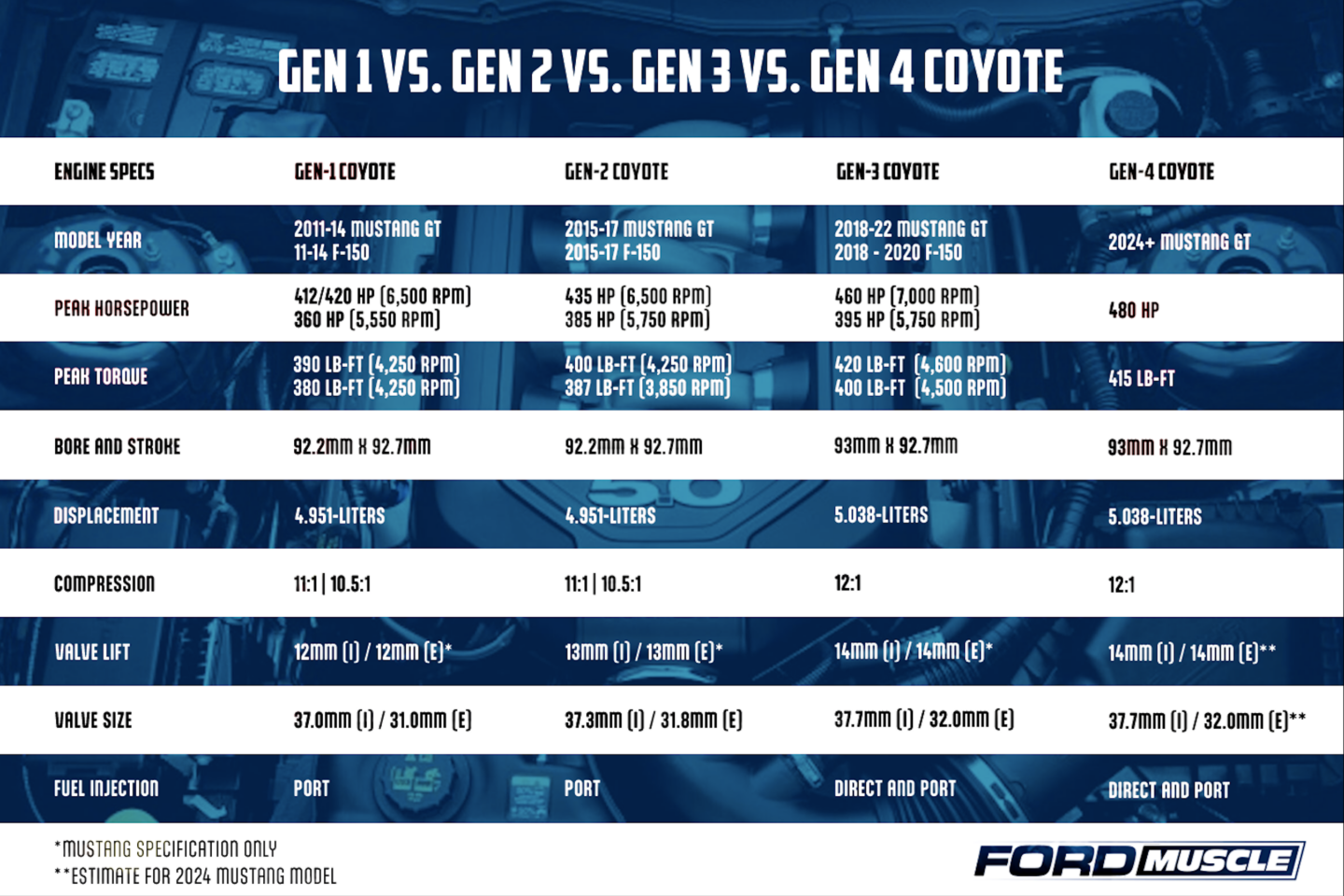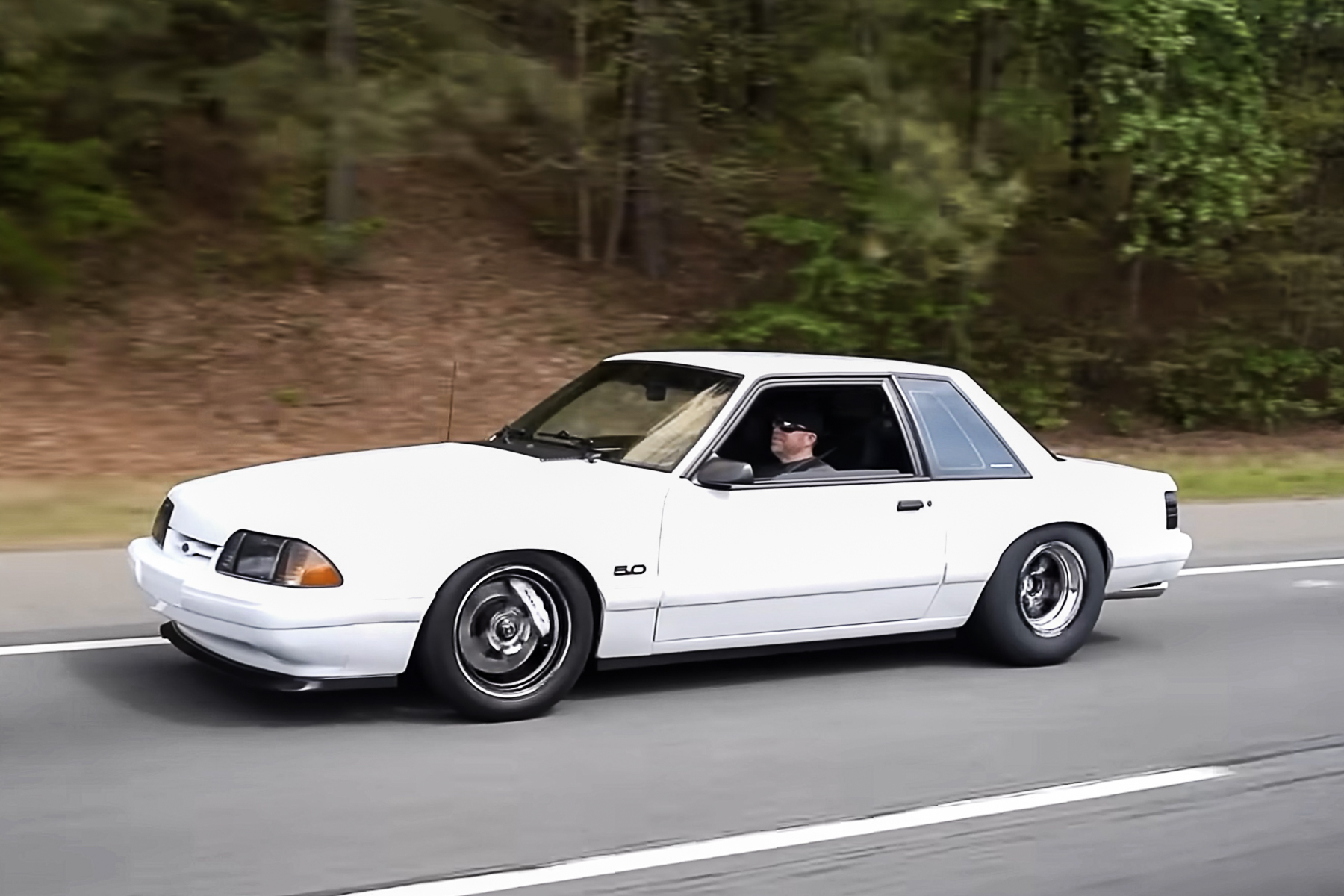In the last installment of Ford Muscle’s Coyote swap guide, we discussed the birth of the Coyote engine with Mike Harrison, who at the time of the modern 5.0-liter’s inception was in charge of the platform coming to fruition. Harrison elaborated heavily on the fact that the Coyote engine was fortified with the anticipation of being supercharged by end users, so it makes sense why the engine has become such a formidable foe on and off the track. However, with over a decade of existence under its belt, and moving into the foreseeable future with a fourth generation, it can be intimidating to determine which engine to start your Coyote swap with.
While the multi-generational Coyote engine is both impressive and intimidating, Ford did make it relatively simple with only four generations and a limited number of outliers in the mix. As the age of the Coyote has grown, so has the knowledge of each generation’s strengths and weaknesses. To gain more insight into the different generations, we reached out to professional engine builder Tim Eichhorn of MPR Racing Engines.
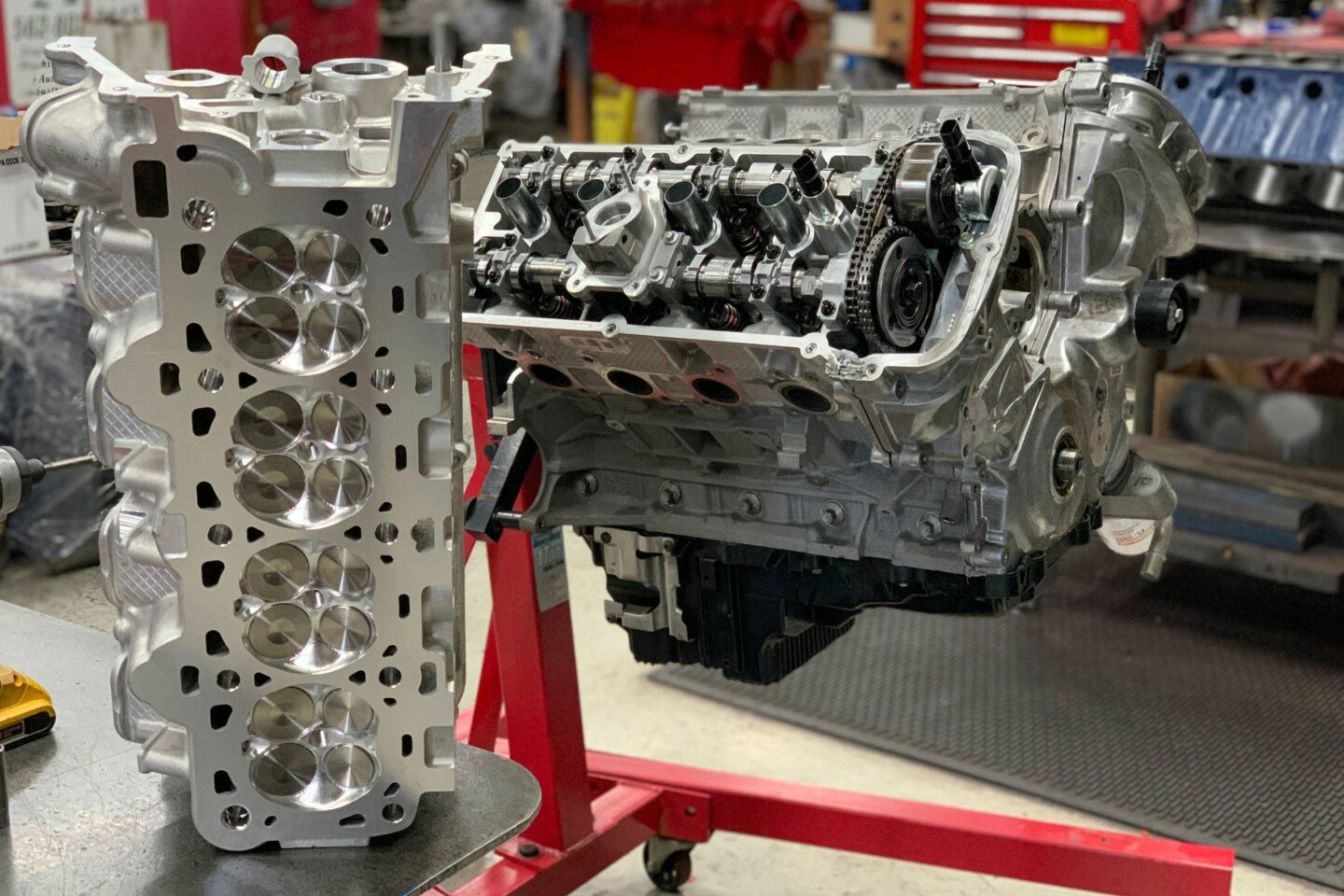
Tim Eichhorn is no stranger to the Coyote engine and competed in the LS vs. Coyote 2: The Supercharged Engine Shootout using Ford’s 5.0-liter platform. His company, MPR Racing Engines, provides custom engine builds using its in-house machine shop. A former Hot Street competitor, in his spare time Eichhorn now crew chiefs for his son’s NMRA Coyote Stock car.
Internal And External Pressures
From a broad point of view, Ford’s engineers were able to achieve what was wanted internally at Ford Motor Company and by enthusiasts worldwide: more horsepower in each generation. The engineers completed this objective, despite pressure to meet stricter emission standards by the Environmental Protection Agency (EPA).
Each generation of Coyote found in the Mustang brought an increase in power, from 412 to 420 within Gen-1, to 435 between Gen-1 and Gen-2, and increasing to 460 with the Gen-3. The Gen-4 is slated to increase horsepower to 486, with the Dark Horse variant edging to 500. It might seem like choosing a Coyote to swap in just requires identifying the latest generation for the best bet, but not everything is as it seems, and the Coyote engine is no different.
The Building Blocks
Only four years after Ford engineers dropped the idea of an iron-block 5.8-liter and went with a Modular-derived 5.0-liter engine, the first iteration of the Coyote arrived on the market. The engine came with 11:1 compression, a 92.2 mm bore, 92.7 mm stroke, 12mm (.472 inch) of valve lift on both intake and exhaust, and a redline of 7,000 rpm. The early 2011 and 2012 models also feature 12mm-diameter head bolts and piston squirters. Oddly enough, in 2013 the head bolt shrunk to 11mm and did not return to 12mm until 2018 on the Gen-3 Coyote.
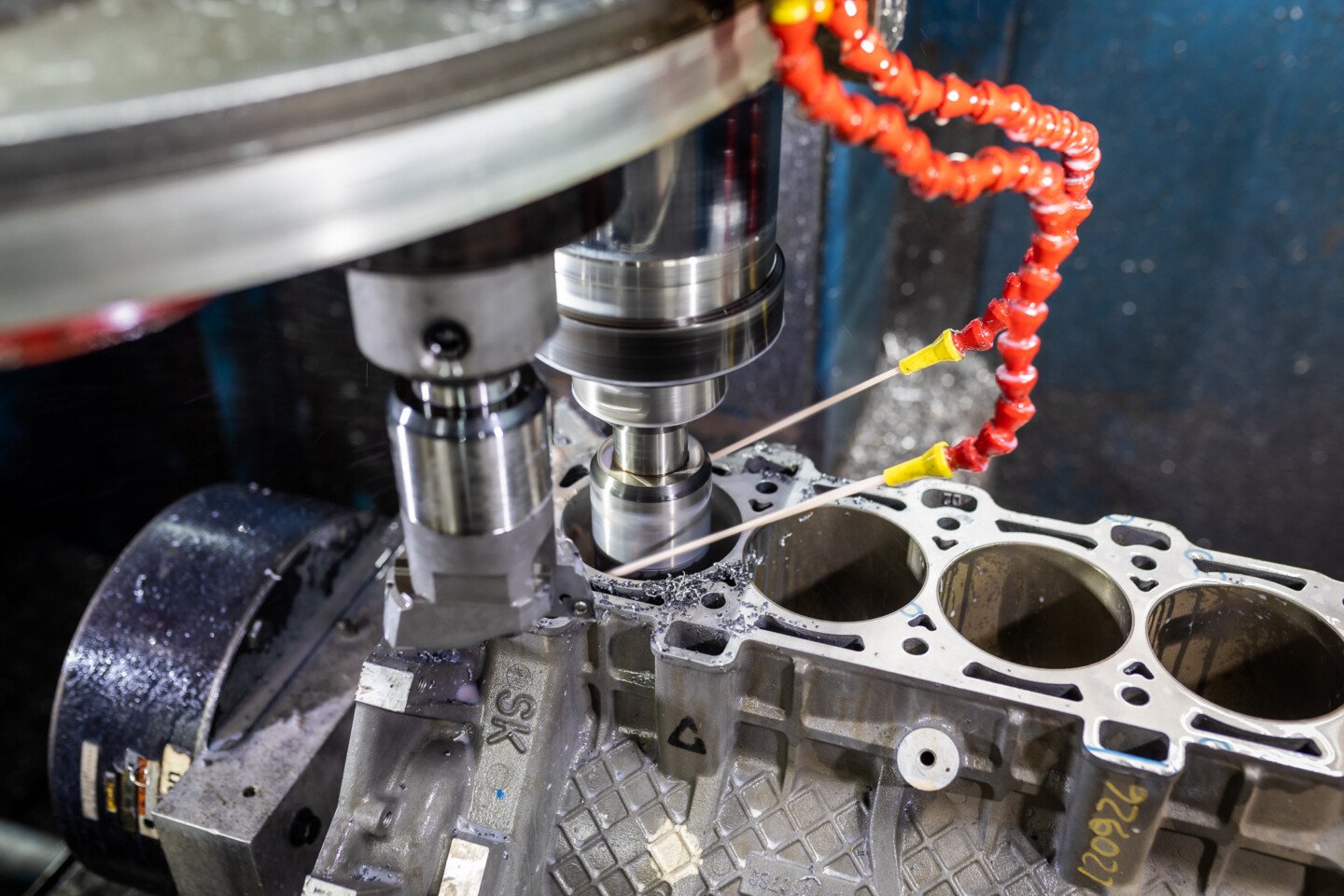
The 2011-2012 Gen-1 Coyote blocks featured 12mm head bolts that were 1mm larger in diameter than the 2013-2017 Coyotes. The engine also included piston squirters that direct cool oil from the main oil feed to the underside of the piston to help remove heat. The primary timing chains found on all Gen-1 Coyotes are also significantly larger than the later Gen-2 and Gen-3.
While the Gen-1 is known for its stout bottom end, the BOSS 302’s Road Runner engine takes credit for being the fan-favorite in the Gen-1 Coyote lineup. “In 2012, the BOSS 302 engine packed 444 horsepower and came equipped with better rods and rod bolts, and more importantly, CNC ported heads that provided the foundation for the Gen-2 heads,” Eichhorn details. The heads, short runner intake, and a 7,500 rpm redline, meant more performance than the original Gen-1 Coyote.
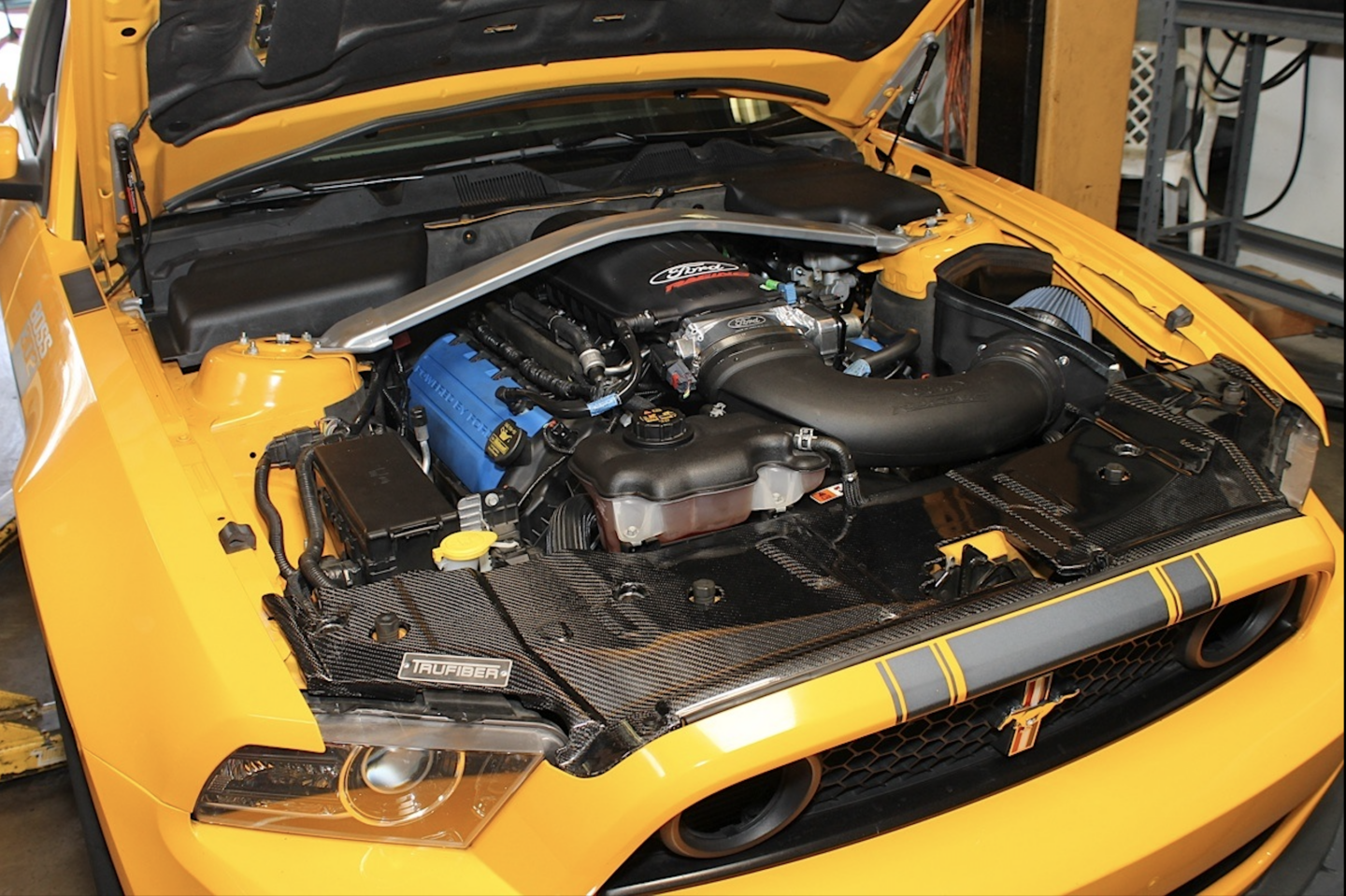
In 2012, Ford decided to add a little spice to the Gen-1 Coyote engine with a Road Runner variant. This engine is found in the 2012-2013 BOSS 302 and packs 444 horsepower, but more importantly, its CNC-machined heads played an integral part of the creation of the Gen-2 Coyote heads.
In a previous interview with Mike Harrison, he informed us that Ford was so impressed with the BOSS 302’s engine design that before it had finished dynamometer durability testing, three prototype engines were placed in race cars destined for the Rolex series in Daytona. While he expressed nervousness for the engines, the race proved to be a great way to test the engines with real-world development.
Gen-2 Coyote
Although it is the first generation that procured the Coyote’s spot on Ford’s wall of successful engines, it is the BOSS 302’s engine that highlighted the need for future Coyotes to come equipped with better heads. This transformation took place in 2015, landing on the release of the all-new sixth-generation Mustang platform.
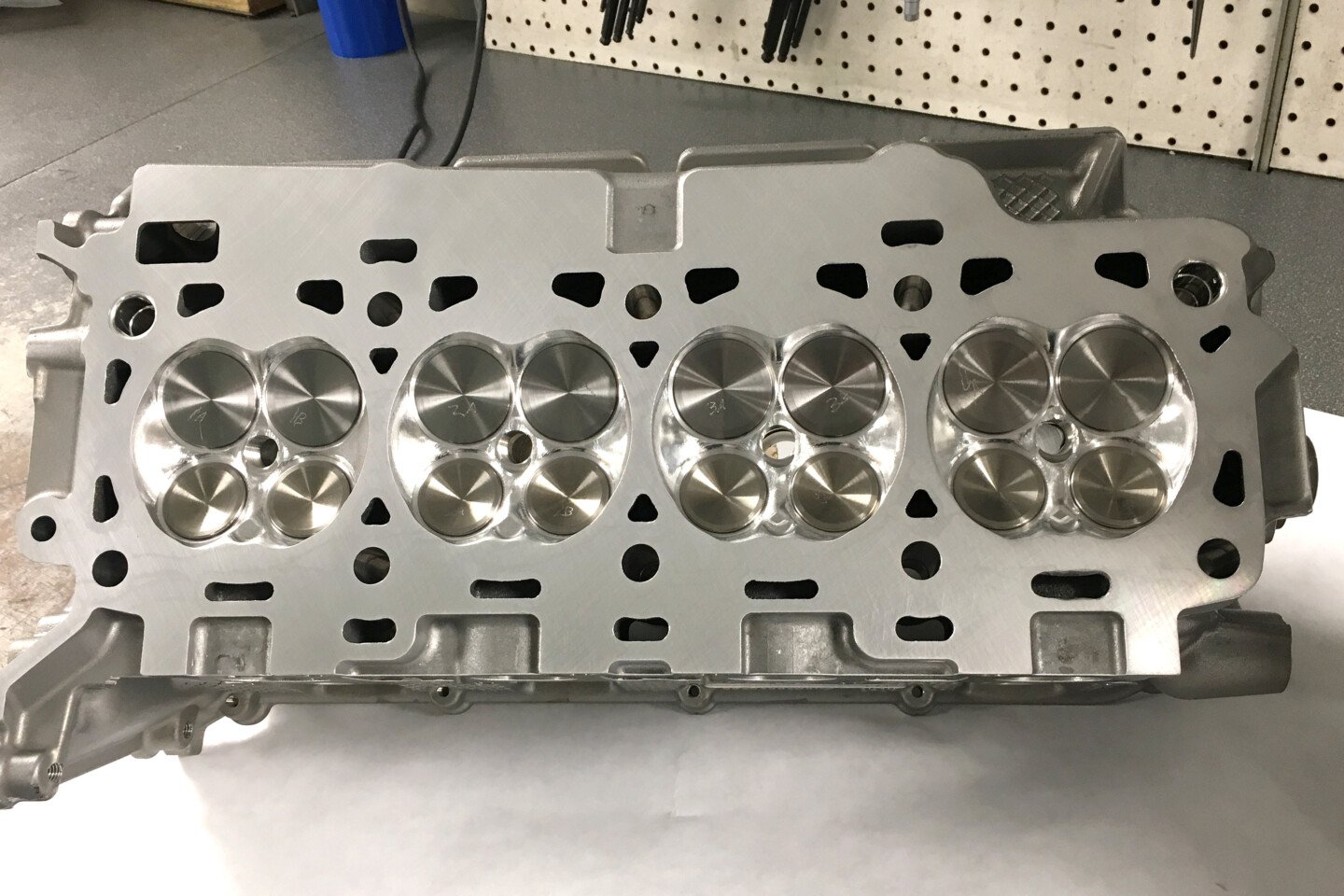
Although the cylinder head pictured here has received a multi-angle valve job and larger valves, the original Gen-2 cylinder heads were still derived from the BOSS 302’s cylinder heads and proved to be beneficial in providing the Coyote with better flowing heads.
The Gen-2 came with what could be considered as-cast BOSS heads, equipped with stiffer springs than the original Gen-1 had seen. The valves jumped to 37.3mm intake and 31.8mm exhaust from the original 37mm intake and 31mm exhaust. However, there was more to it than just new heads. “The Gen-2 Coyote received a new block, updated oil cooling, and 1mm higher lift camshafts on both exhaust and intake.” Eichhorn says. “Unfortunately, Ford did reduce the timing chain’s size on the primary side.”
Gen-3 Coyote
In 2018, Ford introduced the third iteration of the Coyote. The new Gen-3 received a bump in compression from 11:1 to 12:1, partially thanks to its new dual-fuel system incorporating both port- and direct-injection. The redline returned to 7,500 rpm, and bore and stroke increased to 93 mm and 92.7 mm, respectively, making a final displacement of 5.035 liters from the previous 4.951 liters. In addition to the increase in compression, redline, and displacement, a more free-flowing intake manifold was utilized.
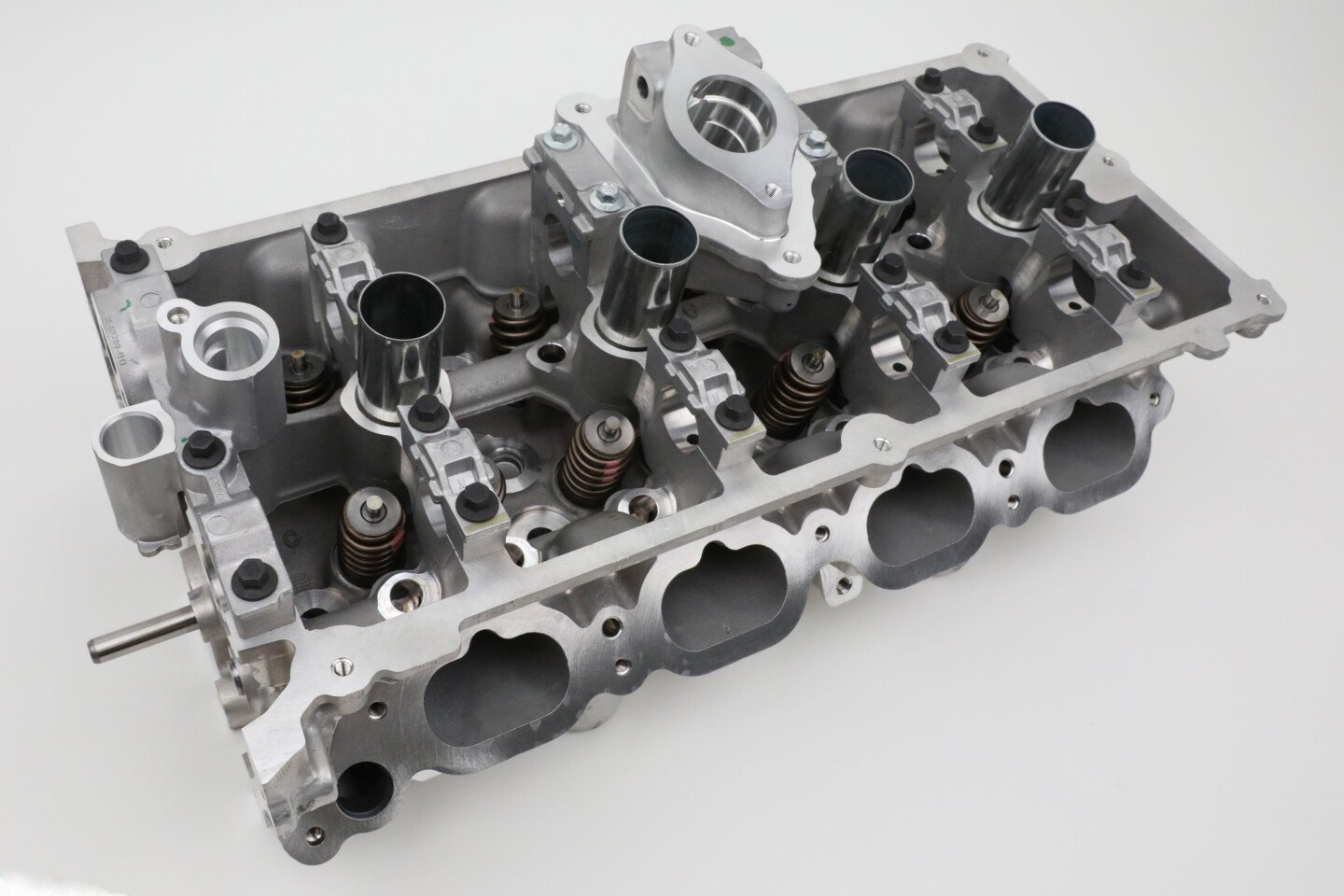
The Gen-3 passenger side cylinder head is easily identifiable by the direct-injection pump housing. Also, the exhaust port is raised up slightly on a Gen-3 head, which creates a different exit path than previous years.
While engineers were able to meet emissions standards by incorporating dual-injection, it has been met with some displeasure from engine builders. “Although the Gen-3 makes the most power out of any current generation, the 10R80 transmission might be its biggest saving grace,” Eichhorn says.
Similar to the BOSS 302’s engine that stemmed from the Gen-1 Coyote, the Gen-3 also had a secondary performance version that was found in the Mustang Bullitt and Mach 1. These revised Gen-3 engines featured a larger throttle body, GT350 intake manifold, and a revised powertrain control module (PCM). The Bullitt and the Mach 1 reached the 480 horsepower mark, respectively. Each version would be rated for 420 lb-ft of torque.
Gen-4 Coyote
In September of 2022, Ford announced they will be bringing out a fourth generation of the Coyote. While the Gen-4 Coyote engine provides an obvious visual difference on the outside, with its dual throttle body setup, the engine’s displacement, valve sizing, and valve lift have remained consistent from the previous generation. However, don’t think the Gen-4 is a continuation of the Gen-3. “Ford made major changes to the Gen-4 heads with all-new camshaft caps, camshaft towers, and the block received a redesigned rear cover,” Eichhorn explains.
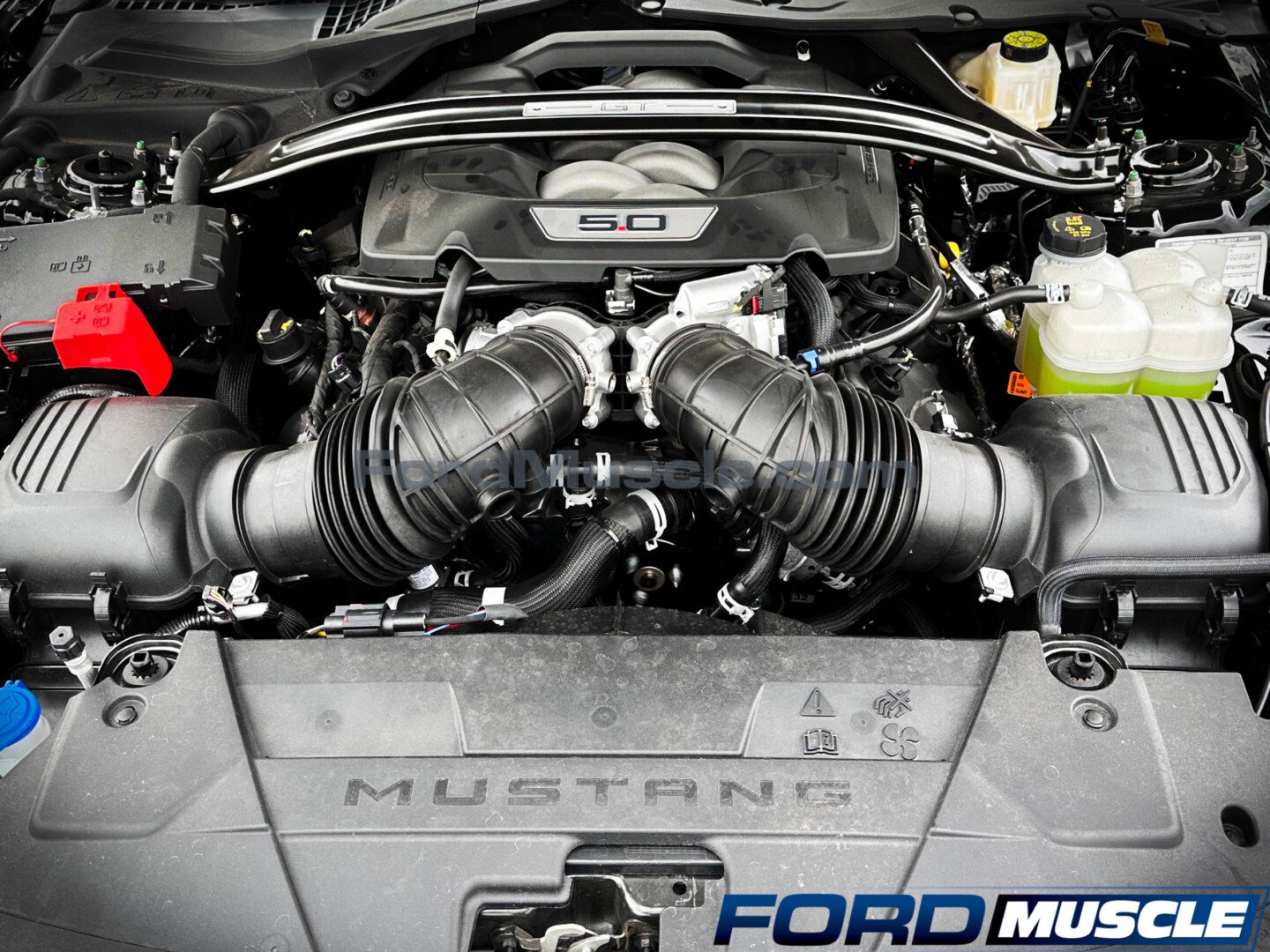
The latest Gen-4 Coyote will be equipped with dual throttle bodies and have new block and head design. The Dark Horse variant is slated to get rods out of the 5.2-liter Predator and updated camshafts.
Creating a stand-out unit with the Gen-4 lineup is the Mustang Dark Horse’s new powerplant. The Dark Horse will be equipped with rods from the 2020-2022 Predator engine and an updated camshaft design. Ford has claimed the combination to make 500 horsepower from just 5.0 liters.
The F-150 Coyote Option
Although the performance version of the Coyote engine can be found in the 2011 and newer Mustang chassis, the most readily available units are located between the strut towers of Ford’s modern F-150 truck. This is because the Ford F-150 outsells the Mustang almost ten-to-one, yearly. Even with the disadvantage of a lower redline, lower compression in the first two generations, and lower horsepower ratings throughout, the truck version of the Coyote engine is the perfect starting point for those looking for a budget-friendly option.
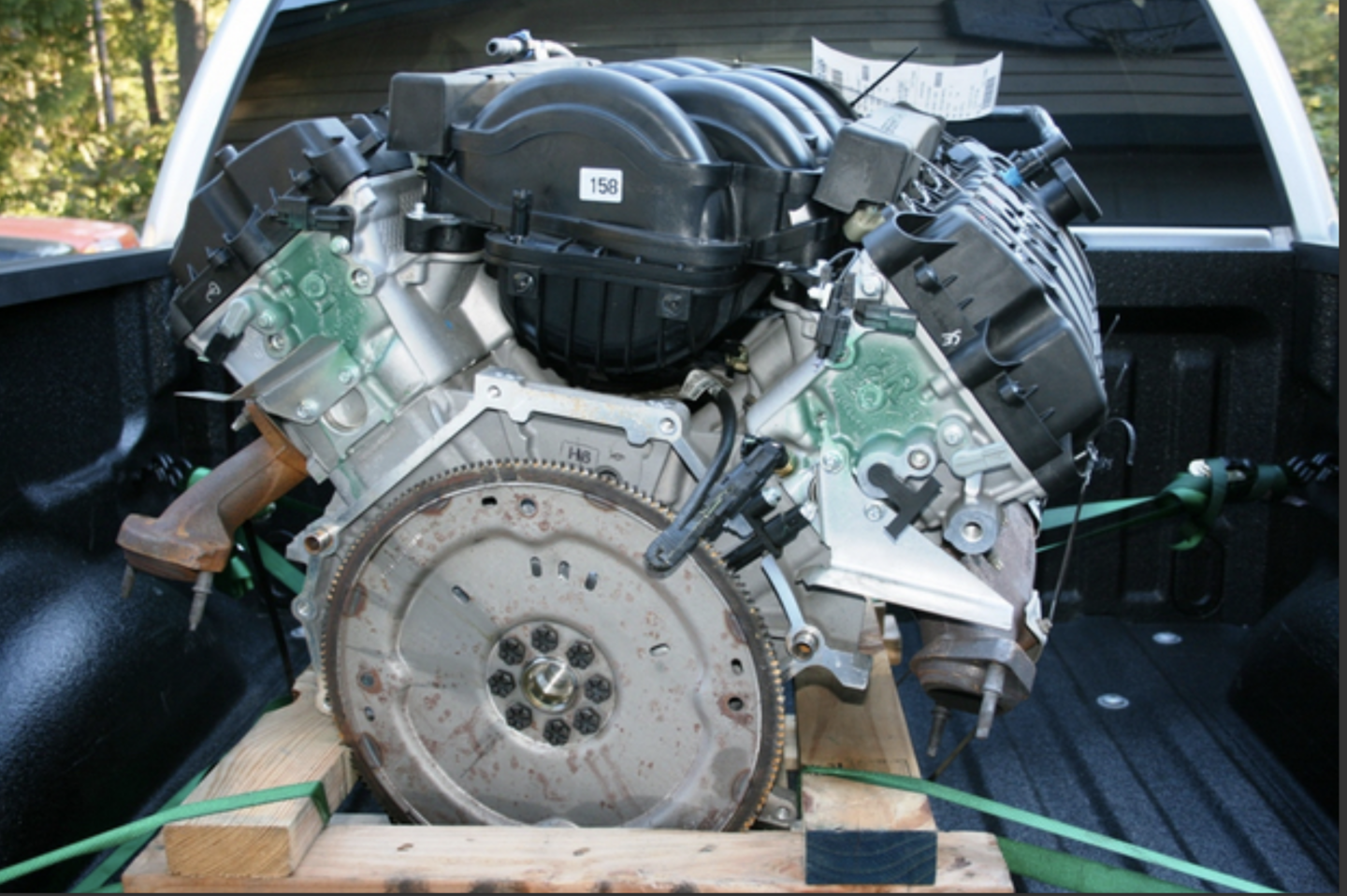
The Coyote engine from an F-150 is another great choice for those looking at a budget-friendly Coyote swap. The engine comes with 10.5:1 compression in the first two generations, has milder camshaft profiles, and the oil pump gears are less robust. However, the pricing and availability helps offset those.
Similar to the Mustang’s Coyote engine, the F-150 Coyote engines saw an increase in horsepower and torque with each new generation. The F-150’s Gen-1 Coyote engine is rated at 360 horsepower and 380 lb-ft of torque, before jumping to 385 horsepower and 387 lb-ft of torque for the Gen-2. The Gen-3 saw another bump in power, taking it to 395 horsepower and 400 lb-ft of torque. On average, the F-150 Coyote is 60 horsepower shy of the Mustang, but reaches peak horsepower 1,000 rpm earlier.
Thankfully, Ford streamlined the process and the arrival of each new generation of Coyote engine for the F-150 aligned with the same year models as the Mustang. The displacement and valve sizes did not change either. However, the intake and camshaft designs are different resulting in an engine that provides low end torque, instead of focusing on peak horsepower. No worries though, as simply swapping intake and camshafts can yield a higher RPM powerband or change peak horsepower results that you may desire, but that is a topic for another time.
5.2-Liter Outliers
While all four generations of the Coyote engine can be found in the Mustang and F-150 lineup, there are a few outliers that helped sculpt some of Ford’s most iconic Mustangs. Notably, the 526 horsepower Voodoo engine in the 2015-2021 Shelby GT350 and the 760 horsepower Predator engine found in the 2020-2022 Shelby GT500. These 5.2-liter engines stem from the same architecture of the Coyote, but provide the masses with an over-the-top option.
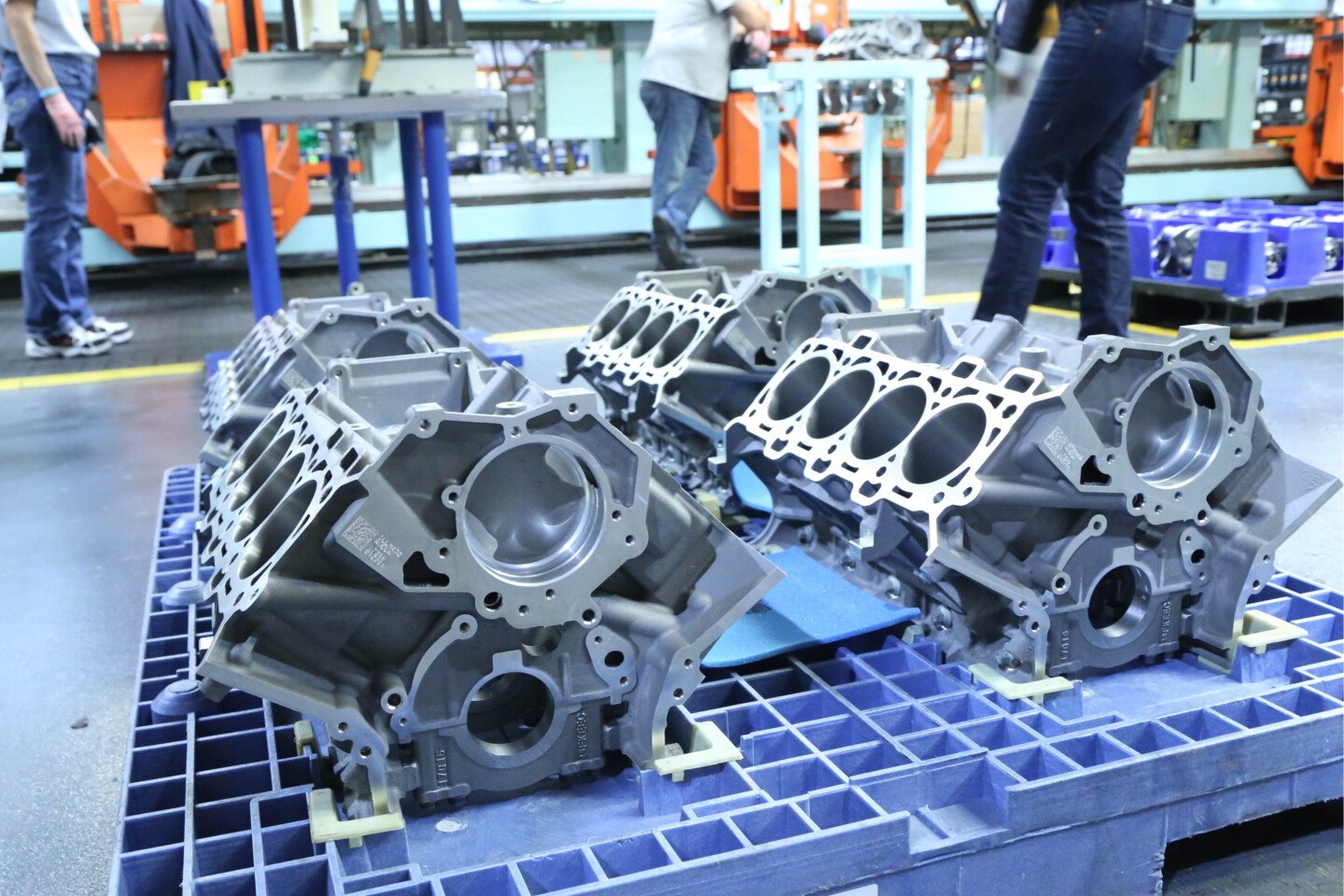
When the Romeo Plant’s Niche Line was still functioning, Voodoo engines could be found sitting bare, awaiting to be assembled. Unlike the 5.2-liter Predator engine, these blocks received flat-plane cranks and CNC-ported heads versus the Predator cross-plane crank with as-cast heads.
Both 5.2-liter variants receive their displacement from a bore and stroke of 94mm and 93mm, respectively. The sinister siblings run 14mm valve lift on intake and exhaust and valve sizing of 38.3mm intake and 32.5mm exhaust. While the Voodoo maintained 12:1 compression, the Eaton TVS R2650 required compression to be reduced on the Predator to 9.5:1. A difference in head machining existed, with the Voodoo receiving CNC-ported heads, while the Predator were equipped with as-cast heads. Aside from a difference in horsepower, the two engines have different powerbands, with the Voodoo spinning to 8,250 rpm and the Predator stopping at 7,500 rpm.
“The Voodoo engine provides Ford fans with a flat-plane crank,” Eichhorn says. “However, it is designed to be a naturally aspirated engine. When you start adding boost to the platform, some have encountered oiling issues and rod damage.” While the exotic exhaust note of the 5.2-liter Voodoo engine created a buzz, its supercharged counterpart found in the GT500 takes the horsepower crown.
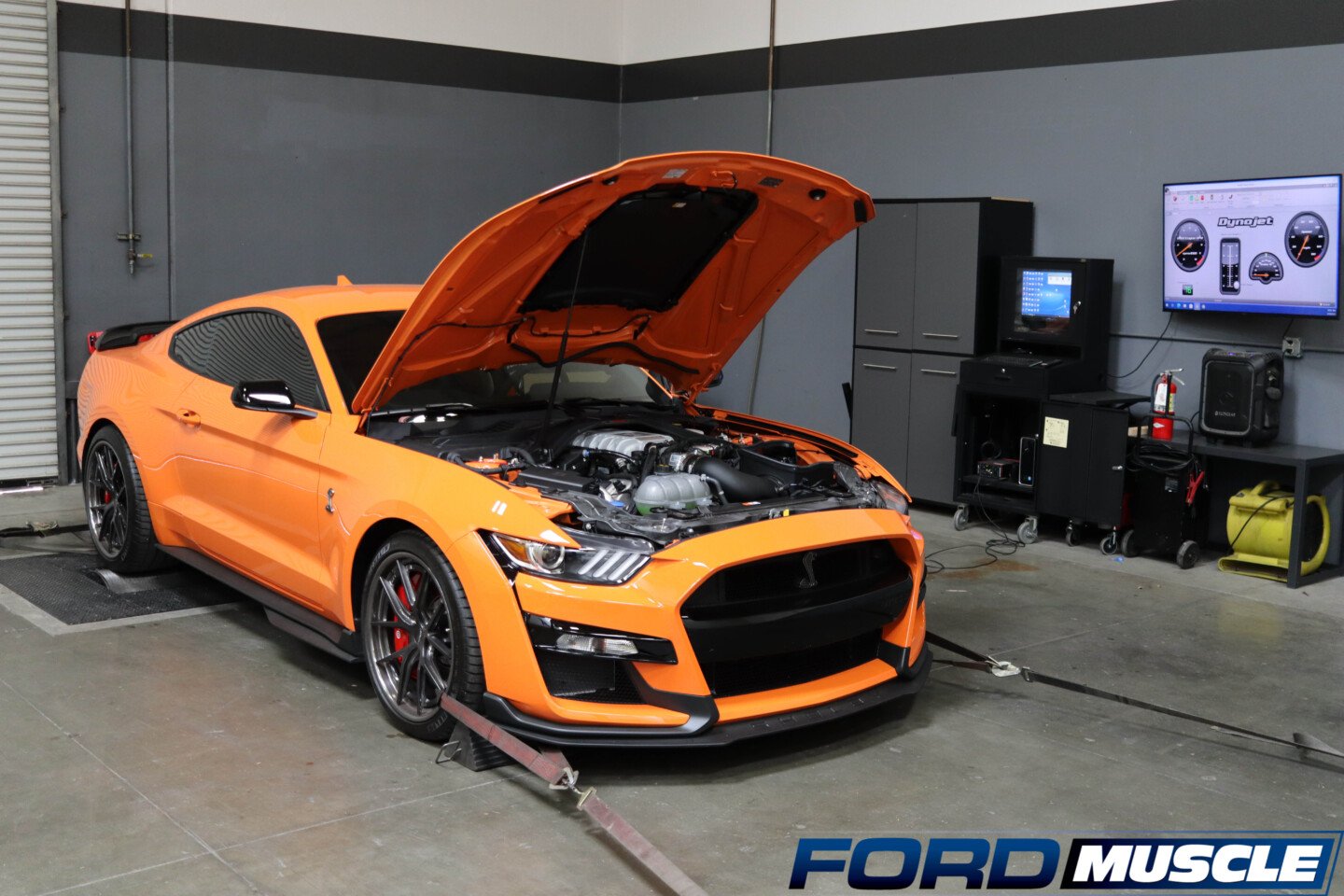
The supercharged 5.2-liter Predator engine makes 760 horsepower at the crank and is very “mod-friendly” when it comes to adding more power. We made 940 horsepower with simple bolt-ons on our 2020 model.
“The 5.2-liter Predator engine is the ‘King of the Coyotes’ if you will. The internals and block are the strongest produced by Ford. The plasma coating is better than anything else Ford used in the past,” Eichhorn explains. “The cylinder heads are GT350 heads with a different valve spring package. if the Gen-2 and GT350 heads had a baby, these would come out.”
Best Of All Worlds
Like most, desiring the best of each generation is not a far-fetched goal, and at Ford Muscle, we have seen a rise in the number of “Coyote 3-2-1” builds. Some of this can be attributed to backorders, availability of takeouts, and other factors, but the Coyote’s interchangeability of key components means you have the ability to build a Coyote engine with relative ease.
All you need is a good block, crank, and heads and you have a solid foundation for a Coyote engine. — Tim Eichhorn, MPR Racing Engines
“The first three generations of the Coyote all share the same block architecture,” Eichhorn explains. “The block, crank, and heads are all interchangeable with the only differences being between timing, camshafts, and a few other minor things. While the coolant ports don’t line up when a Gen-3 block is combined with a Gen-1 or Gen-2 heads, gasket companies have corrected this and reduced the risk of leaking.”
Unfortunately, the future doesn’t look good for utilizing a Gen-4, as Ford has made major changes to the heads and block. “It will take a lot of work to get a Gen-4 to fit with Gen-1, Gen-2, or Gen-3 products,” Eichhorn explains.
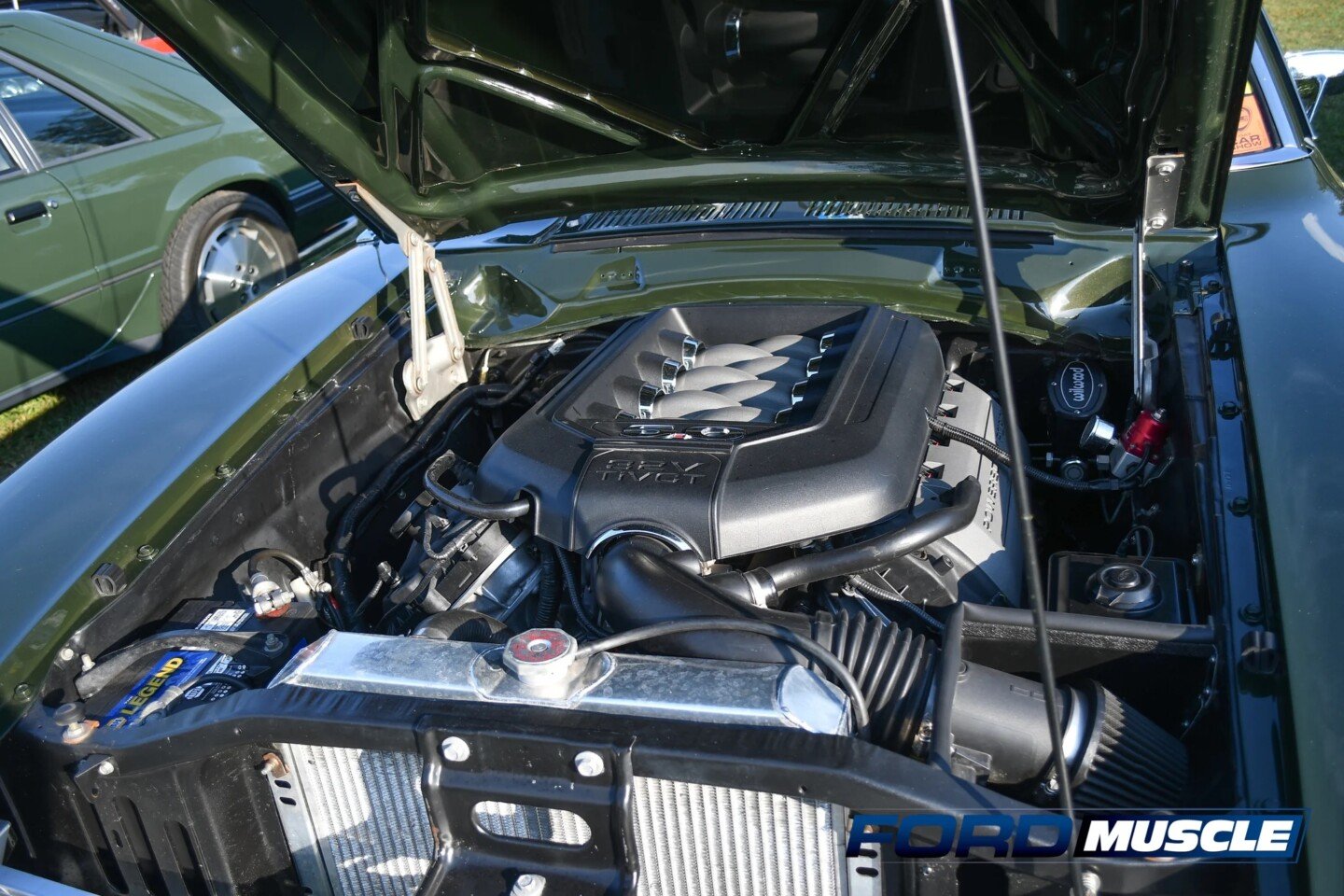
The simplicity of the Coyote engine means that performing a Coyote swap is easily achievable. This 1970 Ford Maverick was given a new, and much more powerful, lease on life with a Coyote powerplant underhood.
The Choice Is Yours
Now that you have the details from each generation of Coyote engine, you can make an educated choice on which Coyote swap you’ll be installing in your classic cruiser or off-road bruiser. Regardless if you plan on staying naturally aspirated or introducing forced induction to the engine, the Coyote’s simplistic interchangeability provides a user-friendly swap. Stick around because Part 3 of Ford Muscle’s Coyote swap guide is going to dive into the parts list of what’s needed to get these 5.0-liter engines into your engine bay!

